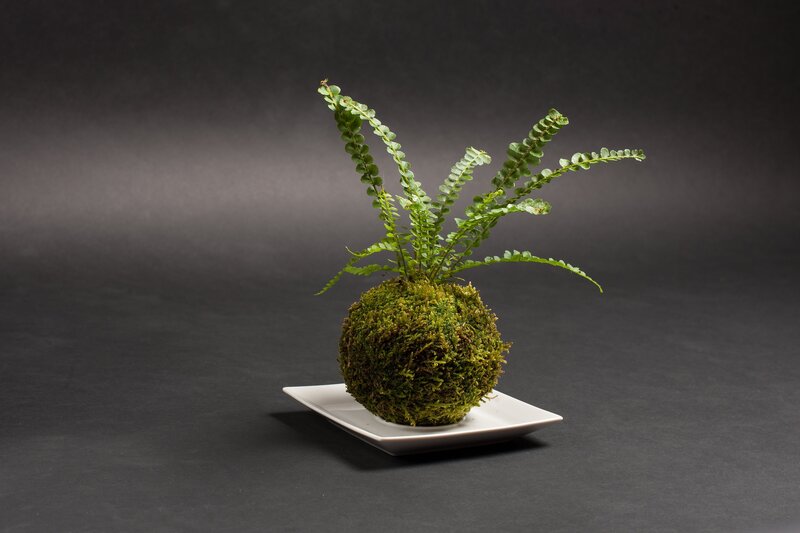Kid-Safe Gardens: Blend Fun with Safety in Your Backyard
Posted on 26/08/2025
Kid-Safe Gardens: Blend Fun with Safety in Your Backyard
Creating a kid-safe garden is an exciting way to combine scenic beauty, outdoor play, and peace of mind for parents. Designing a backyard that harmoniously blends fun and safety allows children to explore, learn, and grow while minimizing risks. In this comprehensive guide, we'll provide innovative ideas, practical tips, and expert advice to help you create the ultimate child-friendly garden that inspires curiosity and keeps your children protected.
Why Create a Kid-Safe Garden?
Children naturally gravitate toward the wonders of nature, and a garden can become their favorite classroom, playground, and retreat. By thoughtfully planning a family-friendly backyard, you're offering them:
- Safe exploration of the natural world.
- Opportunities for physical activity and creativity.
- A calming space that encourages emotional well-being.
- Valuable lessons about plants, seasons, and wildlife.
- Quality family time outdoors, away from screens.
A child-safe garden isn't just about minimizing hazards--it's about maximizing adventure and learning opportunities!

Foundations of a Safe and Fun Kid's Garden
Choose the Right Location
The first step to crafting a child-proof garden is location. Pick an area that offers:
- Good visibility: So you can supervise play easily.
- Plenty of natural shade or space for shade structures to protect against sunburn.
- Safe distance from high-traffic streets, driveways, and water features.
- Fencing or hedges as boundaries to prevent wandering.
Design with Safety in Mind
When drawing up your plan for a safe backyard for kids, include features such as:
- Soft, impact-absorbing surfaces (like rubber mulch or grass) under climbing structures and swings.
- Clear, wide pathways free of tripping hazards.
- Rounded corners on all play equipment and raised beds.
- Non-toxic materials and sturdy construction wherever kids will play.
Safety by design is your first defense against common injuries in backyard play spaces.
Essential Elements of a Child-Friendly Garden
1. Use Non-Toxic, Kid-Safe Plants
Many popular garden plants can be surprisingly toxic to children if ingested or touched. To keep your garden child-safe:
- Research all new plants before adding them.
- Avoid species such as foxglove, nightshade, azaleas, oleander, and lily-of-the-valley.
- Favor edible or safe ornamental species like sunflowers, strawberries, snapdragons, and marigolds.
- Label plants to teach children what is safe and what isn't.
Kid-friendly gardening is an opportunity to teach about plant safety--and perhaps even grow your own snacks!
2. Incorporate Creative Play Zones
A fun backyard for kids goes beyond a patch of grass. Consider these playful additions:
- Sand pits or mud kitchens for tactile exploration.
- Sturdy swings, mini climbing walls or tree stumps for balancing.
- Hideaways such as tepee tents, willow tunnels, or living playhouses grown from sunflowers or beans.
- Musical features like outdoor xylophones or wind chimes to engage the senses.
Each area should be designed with age-appropriate safety checks and be visible from a central watching spot.
3. Water Play with Caution
Water features add fun and tranquility to any garden, but they must be managed with safety first:
- For young children, choose shallow splash pads or small, easily emptied kiddie pools.
- Install secure covers and fencing around ponds or fountains.
- Always supervise children whenever water is accessible--no exceptions.
With a bit of planning, water play can be both entertaining and safe!
4. Shade and Sun Protection
Even short bursts of sun exposure can lead to burns on young and sensitive skin. Ensure your kid-friendly backyard has:
- Trees or shade sails over play areas.
- Easy access to a shaded rest spot.
- Sun-protective clothing and hats kept near doors to the garden.
Regularly check UV indexes during peak summer and encourage reapplication of sunscreen.
5. Fencing and Secure Boundaries
A well-defined boundary will make your children's garden a true haven. Choose:
- Sturdy fencing high enough to discourage climbing and low enough for supervision.
- Gates with child-safe locks.
- Natural barriers like hedges, but ensure they're non-toxic (skip holly, yew, and privet).
A secure perimeter offers both safety and a sense of privacy for imaginative play.
Common Hazards to Avoid in a Child-Safe Garden
Pesticides and Chemicals
Even organic treatments can pose risks for kids and pets:
- Skip chemical pesticides, fungicides, and herbicides wherever possible.
- If necessary, use natural deterrents such as neem oil or companion planting.
- Store all garden products in locked sheds away from curious hands.
Sharp Tools and Equipment
Keep adult gardening tools, lawnmowers, and trimmers out of reach at all times. Provide kid-sized tools for supervised digging, watering, and exploring.
Allergens and Irritants
- Plant allergy-friendly varieties and avoid those known to trigger hay fever.
- Watch out for plants with stinging hairs, sharp thorns, or spiny leaves, such as nettles, roses, and holly.
Wildlife & Insects
- Opt for secure compost bins with lids to keep out rodents and foxes.
- Reduce wasp attractants near play zones. Avoid standing water, sugary drinks, and open bins.
- Teach children to respect ground-nesting bees and spiders--they're mostly benign and valuable garden helpers.
Encouraging Learning & Engagement in Kid-Safe Gardens
A child-safe backyard is more than just safe--it should be stimulating and educational:
- Grow vegetables and fruits to spark interest in nature and healthy eating.
- Install observation points--like a bird feeder, bug hotel, or butterfly patch-- to nurture curiosity in wildlife.
- Provide a digging patch or child-safe raised bed for hands-on play and learning.
- Label and decorate plant beds using fun, colorful signs or painted stones.
Interactive gardening empowers children and builds lifelong relationships with the natural environment.
Easy DIY Projects to Enhance Your Kid-Friendly Backyard
- Build a bean teepee: Use bamboo poles and climber beans or sweet peas for a magical living den.
- Paint stepping stones: Personalize a winding garden path with your child's art.
- Assemble a sensory board: A board with different natural materials--pinecones, shells, bark--for tactile discovery.
- Construct bug hotels: Stack bamboo, twigs, and dry leaves to create insect habitats.
*These DIY activities not only boost garden appeal, but spark creativity and problem-solving skills!*
Maintenance Tips for a Safe and Fun Backyard
- Inspect play equipment regularly for loose bolts, splinters, and wear.
- Remove hazardous debris such as thorns, sticks, or litter weekly.
- Rake leaves and clear walkways to prevent slips.
- Trim overhanging branches and check for hornets or wasps each season.
- Refresh mulch and sand to maintain soft landings.
Consistent garden maintenance is essential for ongoing safety as your child grows and their play evolves.
Involving Children in Garden Safety
Empowering kids with age-appropriate gardening tasks develops responsibility and respect for outdoor spaces. Try:
- Setting clear rules together about where to play, what is safe, and when to ask for help.
- Praising positive behaviors--like handwashing after gardening or looking before running around corners.
- Letting children choose and plant their own flowers or vegetables within safe garden sections.
Involvement equals investment--kids who help care for their garden are more likely to respect boundaries and avoid hazards.

Sustainable and Eco-Friendly Features for Kid-Safe Gardens
Add layers of environmental stewardship to your family garden by considering:
- Composting bins for organic waste, with secure lids for safety.
- Rainwater barrels with childproof covers to teach sustainable watering.
- Pollinator-friendly plants and wildflower patches for butterflies and bees.
- Native plants to reduce maintenance and boost wildlife support.
Nurture your child's empathy for the planet--an eco-smart garden is the greatest gift for future generations.
Conclusion: The Joy of Kid-Safe Gardens
Designing a kid-safe garden is a rewarding journey--one that weaves together nature, safety, creativity, and family fun. With the right childproof landscaping strategies and a touch of imagination, your backyard will blossom into a safe haven where young minds can roam free, dreams can grow, and life's happiest memories are made.
So gather your little explorers, roll up your sleeves, and start transforming your outdoor space into a fun, safe, and engaging backyard paradise--the ultimate kid-safe garden that every family deserves.
Additional Resources
- RHS: Child-Friendly Gardens
- Gardening with Kids - Nationwide Children's Hospital
- Playground Safety Tips (CDC)
Happy gardening!

